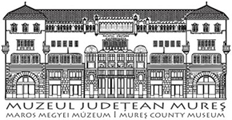Marisia - Maros Megyei Múzeum Évkönyve 33/4. (2013)
Articles
AKIN AKAI OF KELERMES TYPE: NEW DISCOVERIES IN CENTRAL AND NORTHERN BESSARABIA DENIS TOPAL Keywords: akinakai, sword, dagger, Kelermes type, Scythian culture, weaponry, Early Iron age Cuvinte cheie: akinakes, spadá, púmnál, tip Kelermes, cultura sciticä, armament, prima epocä a fierului This article presents some new and previously unknown findings of akinakai from the territory of the Republic of Moldova. These akinakai belong to Scythian culture and could be attributed to Kelermes type. The chronological framework of this type is based on several funeral complexes and determined by 650-600 BC. Distribution of stray finds of Kelermes type swords and daggers allow to reconstruct routes of spread of Early Scythian antiquities in foreststeppes of Don, Volga region and Carpathian basin. Besides that, a special cultural status of this type it is assumed. This supposition is based on such complementary indicators as their presence in burials, the existence of prestige exemplars and representations of such akinakai on other types of archaeological inventory. Also, the bronze model of akinakes (from Medgidia, Romania) is connected with Kelermes type swords and daggers, most likely produced as a decoration of the Scythian anthropomorphic sculpture. This year marks the 50lh anniversary of issuing the well-known monograph on Scythian weaponry, signed by the famous Russian scytho-logist Anna Meljukova (1964). According to A. Alekseev, the classification presented by Meljukova goes back to the ideas of M. I. Rostovtsev and V. A. Gorodtsov.1 In fact, Vasily Gorodtsov tended to keep to the strict classification criteria, the ideal embodiment of which, in his opinion, were the classification schemes as in natural sciences. This aspiration to ideal types makes V. Gorodtsov the first archaeological taxonomist (probably, the first not even in Russia, but in the world), because this ‘typological method’ he substituted to so called ‘museum classification’.2 Nevertheless, the study of A. I. Meljukova is an example of classification, rather a ‘typological’3 than a ‘museum’ or ‘collectible’ one,4 since in her groups (even allocated by hierarchical principles) are hidden chronological and typological observations. Despite the fact that, the classification of A. I. Meljukova still remains the most common and generally accepted, the attempts to rethink the 1 Gorodtsov 1927, 6 after: Alekseev 1991, 272. Though the references to Gorodtsov’s book (‘Typological method in Archaeology’, 1927) are not presented in the monography written by Meljukova. 2 Klejn 2011.1, 648,652-653. 3Klejn 1991,367. 4 Gorelova - Haslavskaja 1991, 61. classification criteria of Scythian armament do not stop. This is quite natural since, as noticed by Leo Klejn, the idea of the ‘best typology’ is only ‘a mirage’ which could be pursued, but never achieved.5 The main strategies in classification (as a scientific method) could be divided in two groups: ‘empiric’ (based on main features of artefacts and allocation in types due to its similarity) and ‘positivist’ (hypothesis-deductive procedure).6 The latter one provides a deductive selection of the features and characters which is determined by only the research objectives, i. e. able to bring it to the typology as a result. This positivist approach could be demonstrated and illustrated on Kelermes type of Scythian akinakai. Basing on the specific combination of some features of akinakai (like the shape of the hilt, of the blade and the most archaic feature - presence of a bight on the handle) A. Voroshilov defined a new group of Scythian swords and daggers in the forest-steppe zone of the Don region, which he named ‘akinakai of Kelermes type’.7 The observations of A. Voroshilov under this type of Scythian akinakai were recently supplemented.8 Earlier, E. 5 Klejn 1991,103-105. 6 Klassifikacija 2013, 141-142. 7 Voroshilov 2009,40; Voroshilov 2011,157; Voroshilov 2013, 91. 8 Topal - Brujako 2012, 134-141; Denisov 2012, 66-67; Shelekhan 2013, 137-138. MARISIA XXXIII, 2013, p. 13-32.
